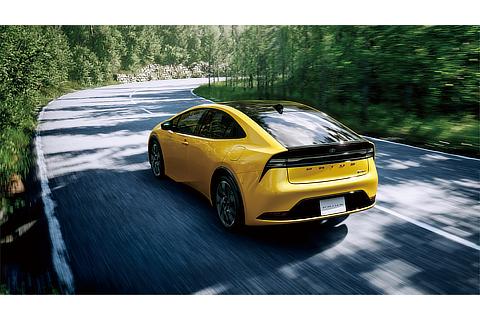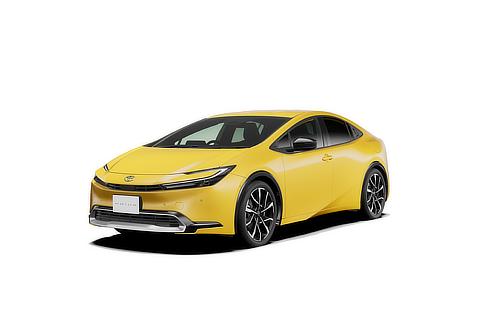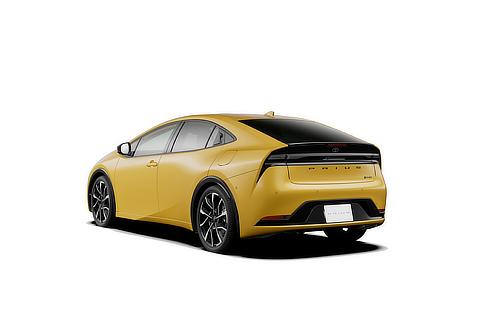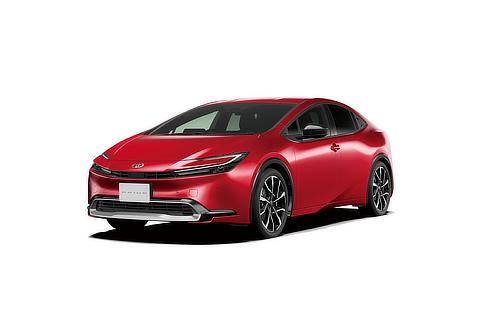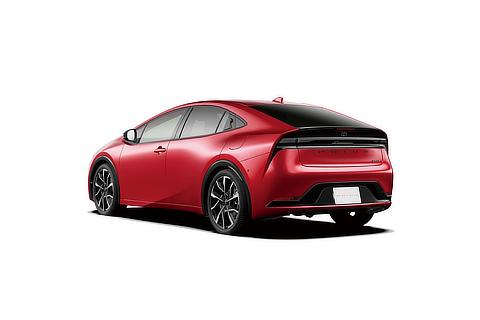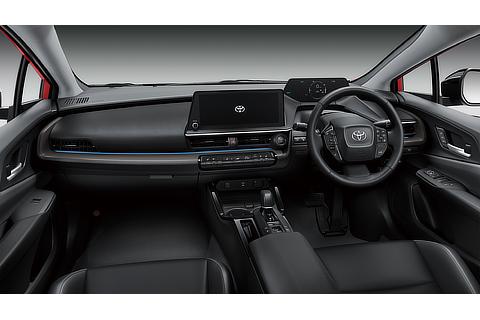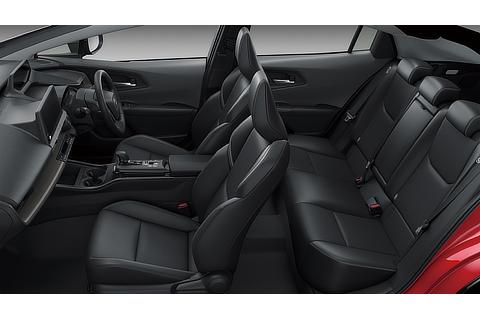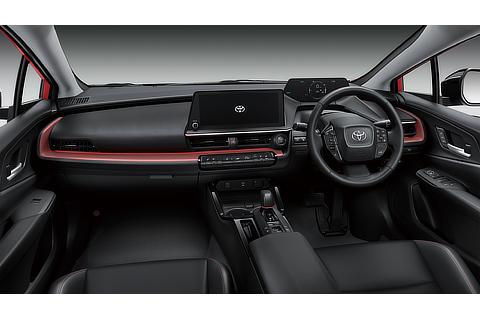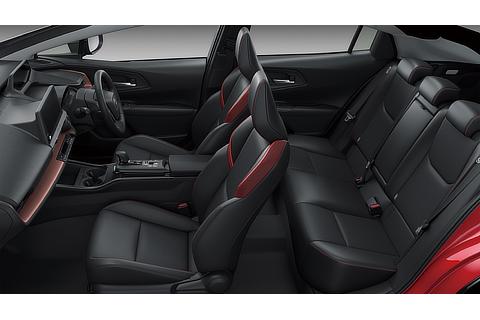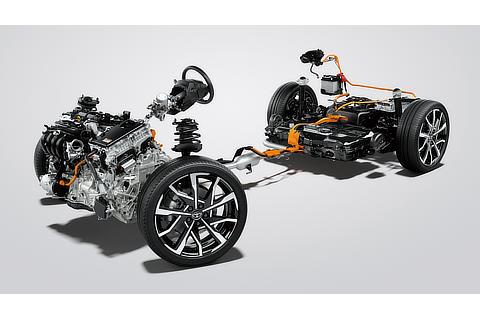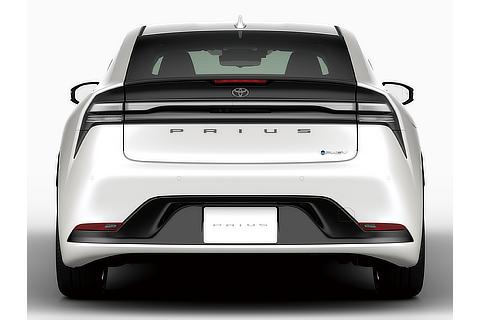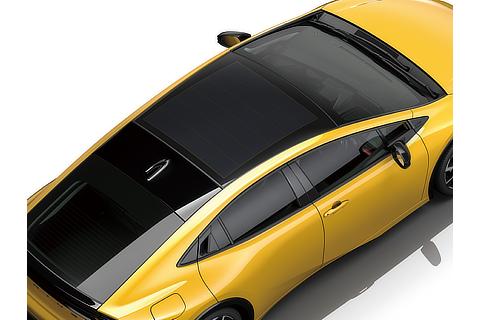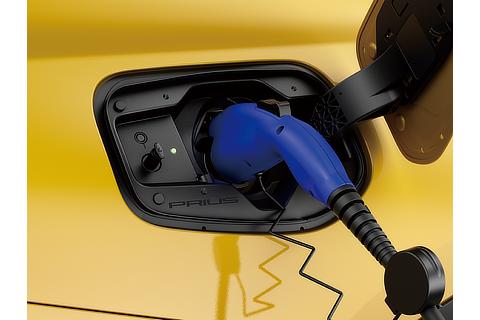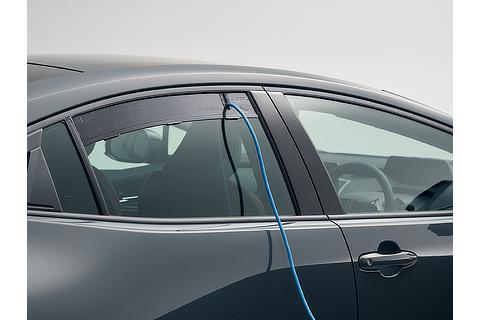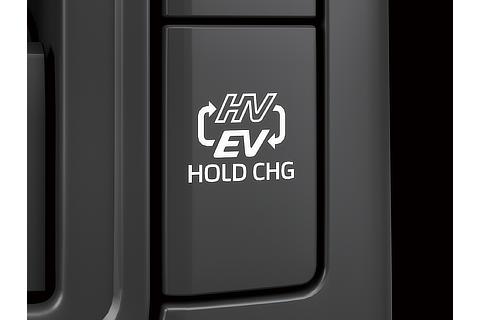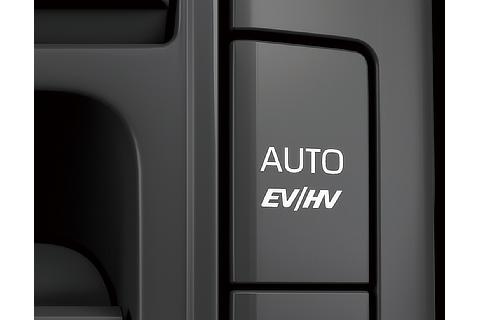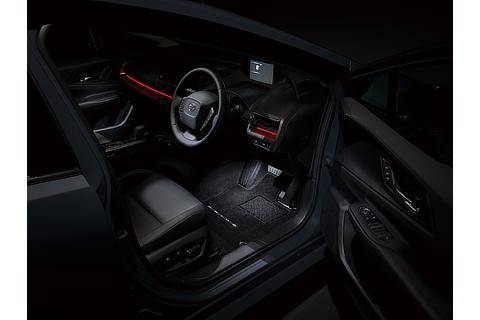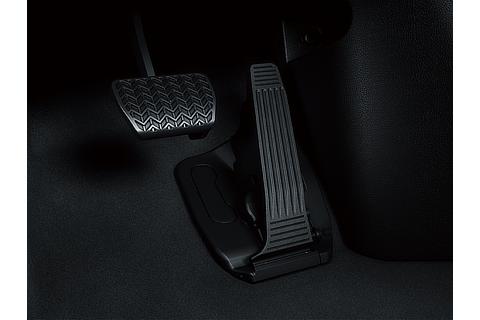Toyota Launches All-New Prius PHEV in Japan
Toyota Launches All-New Prius PHEV in Japan
High-performance driving and refined environmental friendliness combine to make the daily drive more exhilarating than ever
Toyota Motor Corporation (Toyota) announces today that it will commence sales of all-new Prius Plug-in Hybrid (PHEV) models, offered as the Z grade, on March 15.

Developed under the “Hybrid Reborn” concept, the new Prius has evolved into an exhilarating package that adds a design inspiring love at first sight and captivating driving performance to its core strength as an environmentally friendly car. Prius HEV models were launched in January this year, and they are already enjoying a great reputation.
The new Prius PHEV, offered as the Z grade, has been reborn as a high-performance version equipped with the latest plug-in hybrid system, which combines a compact, high-capacity drive battery, high-output drive motor, and high-efficiency gasoline engine.
The main features of the Plug-in Hybrid System are as follows.
- PHEV can cover the majority of daily driving, including commuting and going shopping, using just the electric power from the charged battery. It offers the outstanding quietness and brisk motor-based driving performance of a battery electric vehicle (BEV). On longer drives, such as going on a trip, the engine supplements battery power to serve as a hybrid electric vehicle (HEV) that ensures the cruising range needed for traveling long distances with peace of mind. At the same time, the combination of motor and engine delivers the powerful yet comfortable driving performance unique to PHEV vehicles from the moment the gas pedal is pressed.
- A unique PHEV external power supply system enables the car to supply power in a range of scenarios from daily living to emergency situations. This includes an external power supply mode that enables the car battery to provide power during outdoor, leisure, and other activities. There is also an external emergency power supply mode that provides a larger supply of power during blackouts, disasters, and other emergencies by using the engine to generate electricity.
- Z (PHEV 2WD) (Model with options shown)
Developed under the “Hybrid Reborn” concept, the new Prius has evolved into an exhilarating package that adds a design inspiring love at first sight and captivating driving performance to its core strength as an environmentally friendly car. Prius HEV models were launched in January this year, and they are already enjoying a great reputation.
The new Prius PHEV, offered as the Z grade, has been reborn as a high-performance version equipped with the latest plug-in hybrid system, which combines a compact, high-capacity drive battery, high-output drive motor, and high-efficiency gasoline engine.
The main features of the Plug-in Hybrid System are as follows.
- PHEV can cover the majority of daily driving, including commuting and going shopping, using just the electric power from the charged battery. It offers the outstanding quietness and brisk motor-based driving performance of a battery electric vehicle (BEV). On longer drives, such as going on a trip, the engine supplements battery power to serve as a hybrid electric vehicle (HEV) that ensures the cruising range needed for traveling long distances with peace of mind. At the same time, the combination of motor and engine delivers the powerful yet comfortable driving performance unique to PHEV vehicles from the moment the gas pedal is pressed.
- A unique PHEV external power supply system enables the car to supply power in a range of scenarios from daily living to emergency situations. This includes an external power supply mode that enables the car battery to provide power during outdoor, leisure, and other activities. There is also an external emergency power supply mode that provides a larger supply of power during blackouts, disasters, and other emergencies by using the engine to generate electricity.
The new Prius PHEV achieves a high level of dynamic performance with a maximum system output of 164 kW (223 PS) of power. This model also offers great fuel efficiency of 26.0 km/L*1 with 19-inch tires and 30.1 km/L*1 with 17-inch tires*2. BEV driving distance is 87 km with 19-inch tires and 105 km with 17-inch tires, with the 105 km representing an improvement of 75% compared to the previous model*1. As a result, the new Prius PHEV delivers both enjoyable driving and environmental performance in a car that many customers will continue to cherish as their car of choice for generations to come.
Plug-in hybrid systems are an important powertrain option providing an immediately accessible pathway toward carbon neutrality. Toyota is working on all-round development of electric vehicles, including PHEVs, and hydrogen engines to achieve carbon neutrality and provide a range of options to customers around the world.
Vehicle outline
2.0-liter Plug-in Hybrid System
- Based on the latest fifth-generation hybrid system, the new Prius PHEV combines a compact, high-capacity drive battery and high-output drive motor in Toyota’s first use of its newly developed 2.0-liter Plug-in Hybrid System. This version of the Prius has outstanding dynamic performance with a system that produces a maximum 164 kW (223 PS) of power, which is about double that of the previous model*3, and achieves acceleration of 0-100 km/h in 6.7 seconds. It also offers great fuel efficiency of 26.0 km/L*1 with 19-inch tires and 30.1 km/L*1 with 17-inch tires*2.
- BEV driving distance can cover the majority of daily driving using just the electric power from the battery. Distance is 87 km*4 with 19-inch tires and 105 km*4 with 17-inch tires, with the 105 km representing an improvement of 75% compared to the previous model*3.
- The new Prius PHEV is equipped with Regeneration Boost, which is useful on mountain roads and in other situations that require regular switching between acceleration and braking. When set, this function provides stronger regenerative braking force than normal to deliver responsive driving performance while reducing the frequency of switching between the accelerator and brake pedals.
-

2.0-liter Plug-in Hybrid System
Power generation and supply
- As a feature unique to PHEV models, the new Prius PHEV comes with both a BEV external power supply mode, which uses electricity stored in the battery to provide an external power supply for outdoor, leisure, and other activities, and an HEV external power supply mode, which can use the car as a power supply during blackouts, disasters, and other emergencies. In the HEV external power supply mode, electricity is supplied from the battery only until the remaining power falls to a set level, after which the engine starts to supply electricity. With a full battery charge and full tank of gas, this system can provide enough electricity for about five days of use*5. It also comes with an external electric power supply attachment as standard so that external power supply is possible with the door windows closed to prevent rain and insects from getting in the car when in use. It is also equipped with a vehicle power connector that can be plugged into the charging inlet of the vehicle for use as an external power socket providing 1,500 W (100 VAC).

- External electric power supply attachment
- The new Prius PHEV is equipped with a second-generation solar charging system*6 that efficiently converts solar energy into electricity, providing enough power to drive up to 1,250 km per year*7 in BEV mode. With a highly efficient solar panel installed into the vehicle roof, the battery can be charged in parking lots where there are no charging stations, or even during blackouts from disasters or other causes, as long as the sun is shining. Electric power generated from the solar panel is used to charge the drive battery while parked, with the system not only supplying electricity for driving but for air conditioning and other functions as well. The system also supplies the auxiliary battery system when driving to reduce drive battery consumption.

- Solar panel
- The new Prius PHEV comes with a “My Room Mode” that lets users enjoy air conditioning and audio systems from the external power source by turning the power switch on during normal charging. Creating a comfortable interior space without running the engine, this feature turns the car interior into an additional room that can be used for teleworking, rest, or any other activities.
Exclusive PHEV design
- The all-new Prius uses the same body design for both the HEV and PHEV models, but with their individuality expressed through small differences in shapes and color schemes. The exclusive PHEV design comes with 19-inch aluminum wheels with a sporty and dynamic shape that creates a sense of high-performance driving, and a metallic silver lower grille and smoky gray tail lamps that emphasize technical advancement.

- Z (PHEV 2WD) (Model with options shown)
| *1 | As evaluated by the Ministry of Land, Infrastructure, Transport and Tourism. WLTC mode (Worldwide Harmonized Light Vehicles Test Cycle) is an internationally recognized test cycle and is based on average usage ratios for urban, suburban, and highway driving. |
|---|---|
| *2 | 17-inch tires are a manufacturer option. |
| *3 | Compared to the previous model Prius PHEV. |
| *4 | Driving distance in WLTC mode while using battery charge. As evaluated by the Ministry of Land, Infrastructure, Transport and Tourism. In some instances, the engine will disable BEV driving irrespective of the remaining battery power, according to factors including the state of the engine or drive battery, air conditioner use, and driving style (exceeding the prescribed speed). |
| *5 | Calculated from daily power consumption of 10 kWh (400 W per hour) for an average household. |
| *6 | The solar power generation system is a manufacturer option. |
| *7 | Drive battery charging capacity and BEV driving distance are calculated based on the Japan Photovoltaic Energy Association Labeling Guidelines (FY2016). |
Manufacturer’s Recommended Prices
| Powertrain | Transmission | Driveline | Price* (JPY) | |
|---|---|---|---|---|
| Z | Plug-in Hybrid System (M20A-FXS 2.0-liter in-line 4-cylinder engine) |
Electronically controlled continuously variable transmission | 2WD (FF) | ◎4,600,000 |
| * | Does not include recycling fees. Different pricing applies for Hokkaido and Okinawa. Includes consumption tax. |
|---|
Base sales volume for Japan
PHEV: 450 units per month (Reference: HEV: 4,300 units per month)



